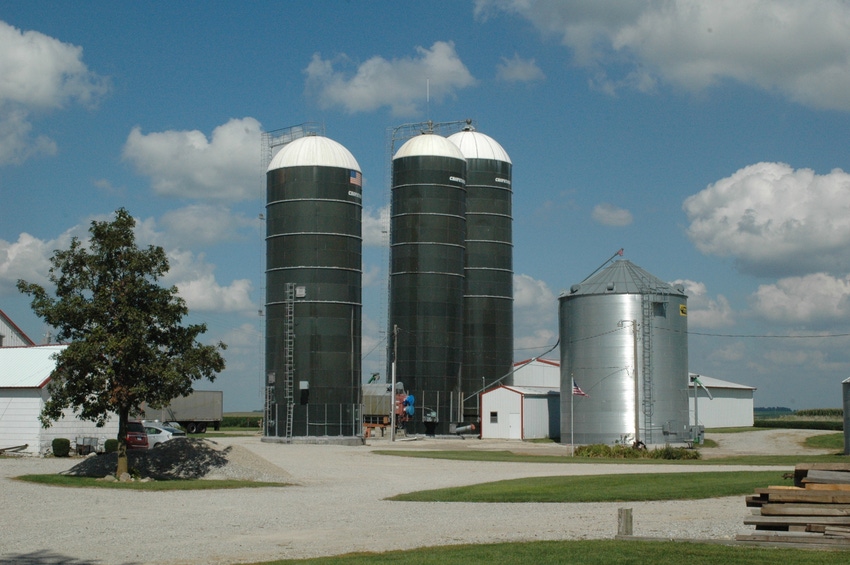March 14, 2018

Here’s a quick quiz. Dry conditions in Argentina reduced the size of its corn and soybean crops. During late winter this year, old-crop soybean futures prices rallied more than $1.20 per bushel, and new-crop soybeans rallied by more than 70 cents per bushel. Select the best answer that describes your marketing plan for old-crop bushels:
A. Stop selling; wait to see how high futures prices rally and try to sell at the top.
B. Rotate to more soybean-planted acres in 2018, with fewer corn acres.
C. Reward the rally; make additional old-crop soybean sales. Price a few new-crop soybeans, but be reluctant to sell this early.
D. Reward the rally; finish old-crop sales and aggressively sell new-crop bushels using Revenue Protection insurance as November soybean futures are above the projected price of $10.16 per bushel.
E. Reward the rally; finish old-crop sales using minimum price contracts should the futures price rally continue. Sell no new-crop soybeans as they seem too cheap compared to old-crop prices.
There is no one right answer. But by spring, you’ll know if your decision was the most profitable and whether it reduced your cost and price risk. You can expect tight 2018 profit margins for both corn and soybeans, as U.S. ending stocks by August are forecast to be at levels not seen in decades.
Spring and summer weather rallies in the Northern Hemisphere should be treated as opportunities to finish old-crop sales and make additional new-crop sales. This is especially true when using RP crop insurance, and new-crop corn futures are above the 2018 projected price of $3.96 per bushel and $10.16 per bushel for soybeans.
Need for crop marketing plan
Each year since 2010, farmers could preharvest-market corn and soybeans during the growing season at prices much higher than those received at harvest. Thus, they could have delivered bushels at or shortly after harvest, and avoided additional storage and interest costs on those unpriced bushels in storage.
Procrastination and the fear of being wrong are probably the primary reasons farmers don’t sell the weather rallies. An initial effort to avoid these mistakes includes knowing your cost of production for new-crop bushels and determining your cost of grain ownership for bushels stored after harvest. If cash flow demands are being met and the storage space isn’t needed, doing nothing might seem like a logical plan. However, having a written plan develops both a purpose and accountability to market the grain and can help align cash flow needs.
Storage and interest charges aren’t free, and many farms are challenged by their ability to find profitable margins. Holding multiple years of corn or soybean crops can lead to the erosion of valuable working capital (current assets minus current liabilities), which can lead to the need for restructuring debt. Now this restructured debt will command higher interest rates.
5-step marketing plan
Consider these five primary steps in developing your written marketing plan for both old- and new-crop bushels.
1. Determine your cost of production, cost of grain ownership (postharvest) or reasonable profit margin.
2. Set price objectives (both futures and cash prices).
3. Identify time objectives (specific decision dates, especially the spring months).
4. Use a variety of marketing tools, such as hedge to arrive (HTA), hedges and put options for new-crop sales. Consider spot cash sales in combination with basis and minimum-price contracts for old-crop bushels.
5. Identify your reasons for taking the marketing action you did.
Individual cost of production for growing crops will vary greatly by farm and are highly dependent on final crop yields. The use of RP crop insurance mitigates a large portion of both the yield and price uncertainty for marketing new-crop bushels. Consider using your actual production history as your best yield estimate before pollination and grain fill.
Once the crop is harvested and stored unpriced, grain ownership reflects both the cost of storage and accrued interest charges. On-farm storage costs would typically be lower than those in commercial storage. This assumes the grain bins on-farm are paid for. Having the bushels stored on-farm can lead to more choices in determining the best cash prices (via basis) and where to deliver those bushels. Building new grain storage and making principal payments can use up valuable working capital.
Price objectives reflect both the futures price and cash price you are willing to receive. The difference between these two prices is called basis. Basis reflects local supply and the demand for that crop. With large old-crop supplies readily available throughout the Corn Belt, you can expect basis will tend to be wider or weaker than normal after spring.
The 2018 weather concerns will likely need to cover a large geography of the U.S. or China to see significantly higher futures prices beyond spring. Consider using hedges or HTA contracts for selling new-crop bushels, as the basis for fall delivery will likely stay wider than normal. Also, a large quantity of bushels will likely need to be moved in late August and September to make room for 2018 crops.
Be ready for seasonal moves
Time objectives should reflect the seasonality of both futures as well as cash prices. Corn futures prices tend to rally in early spring and peak by late June or early July. This reflects the period of the greatest uncertainty of production for a crop produced primarily in the Northern Hemisphere.
Soybean futures prices move higher in both the late fall and winter when Southern Hemisphere production is threatened. Then soybean prices typically rally again in the late spring and early summer, reflecting uncertainty of production in the Northern Hemisphere.
Use various marketing tools
Using a variety of marketing tools can spread your risk and allow you to time sales to capture futures when prices are high, or capture basis when it’s narrow. These events tend not to occur at the same time. Thus, using only spot-cash and forward-cash contracts can have serious limitations. Postharvest basis usually strengthens significantly by mid-November through Christmas for both corn and soybeans.
Consider the use of HTA contracts, and the use of January soybean or March corn futures. The combination of low futures prices and wide basis, especially at harvest, has created the need for more aggressive preharvest marketing strategies.
If delivering bushels, include HTA contracts, or sell for cash and stay long futures with basis or minimum-price contracts. You can then separate the decision to accept simultaneously both the futures price and basis using these tools.
Should a farmer prefer to manage the futures price yet not commit bushels to delivery, he or she should consider working with a broker and using futures hedges or buying put options.
Johnson is an Iowa State University Extension farm management specialist. Contact him at [email protected].
About the Author(s)
You May Also Like






